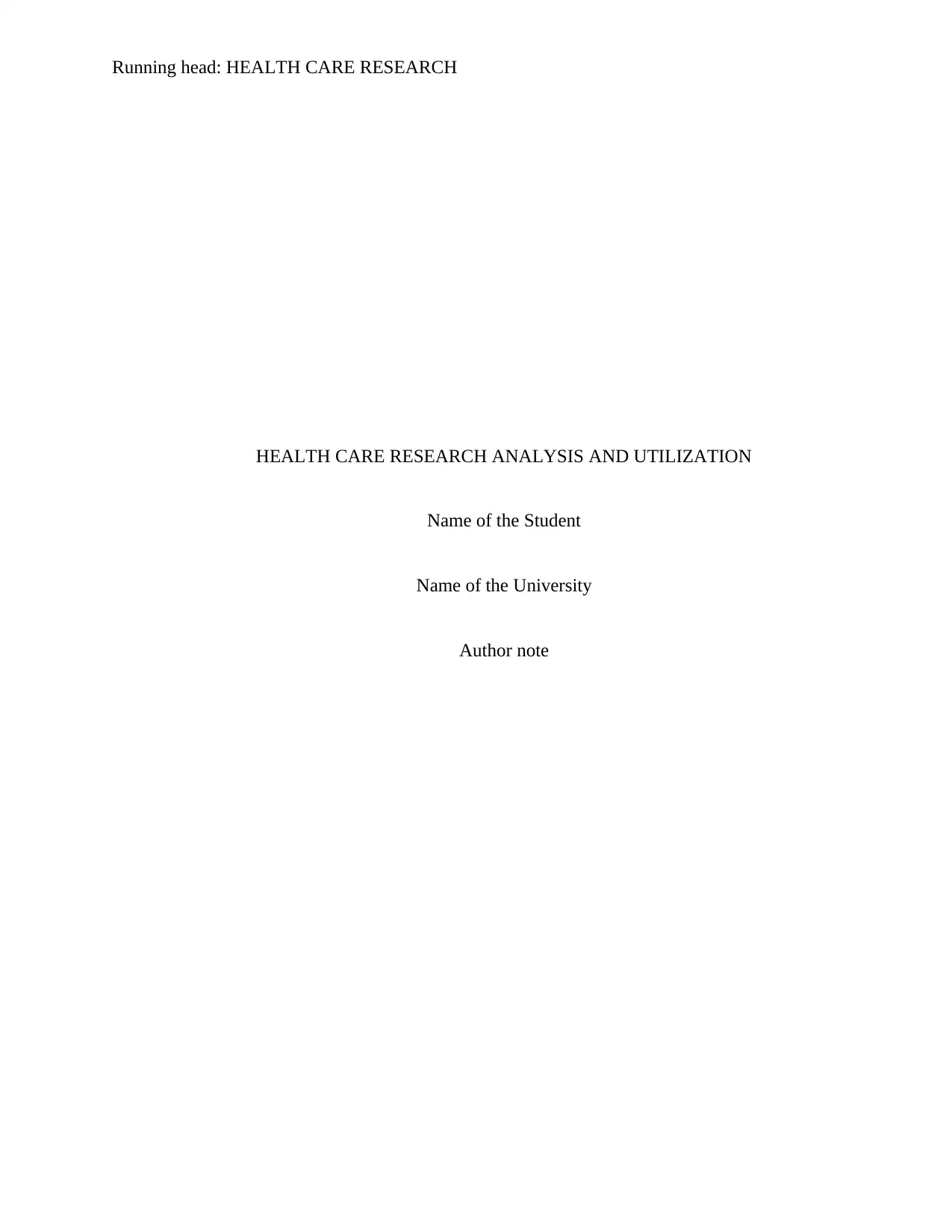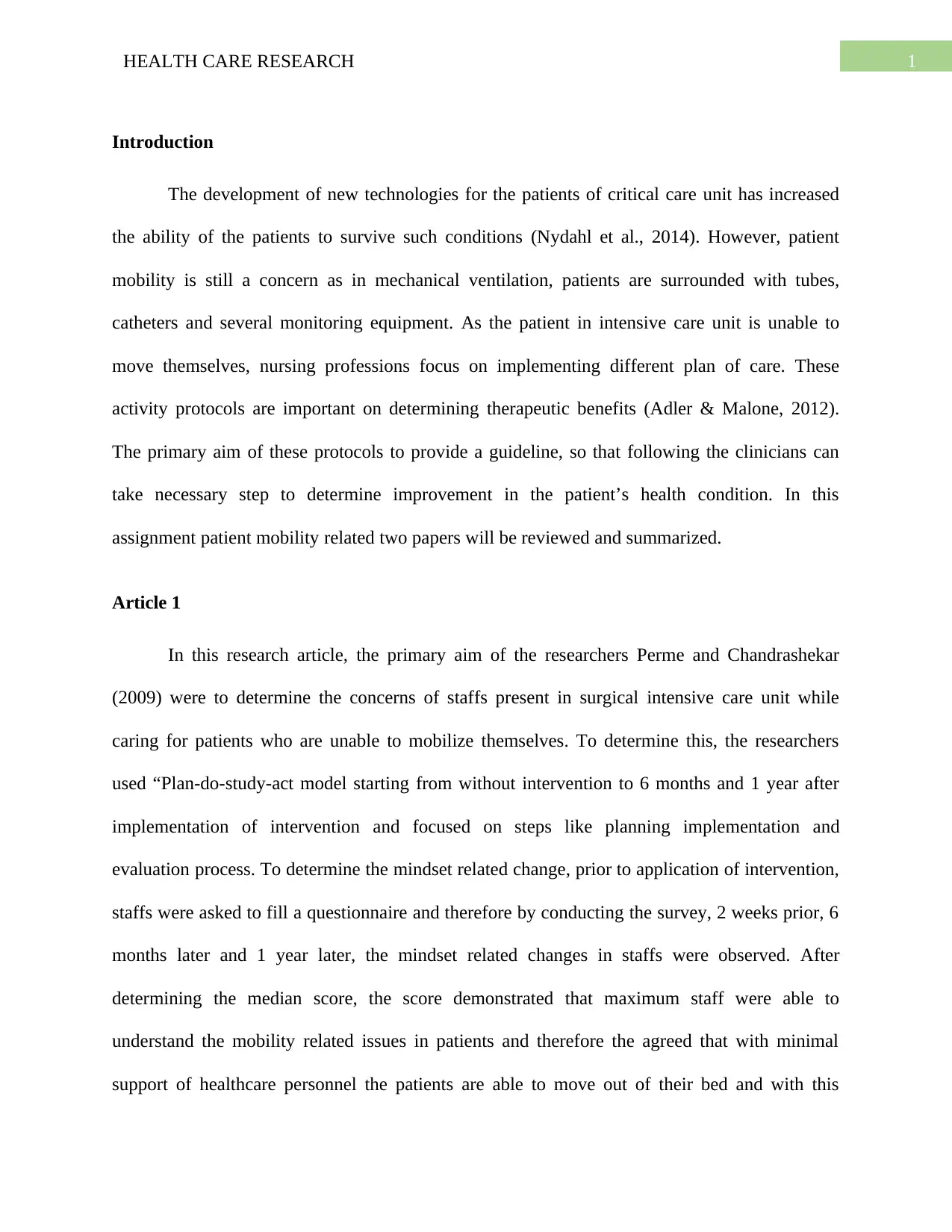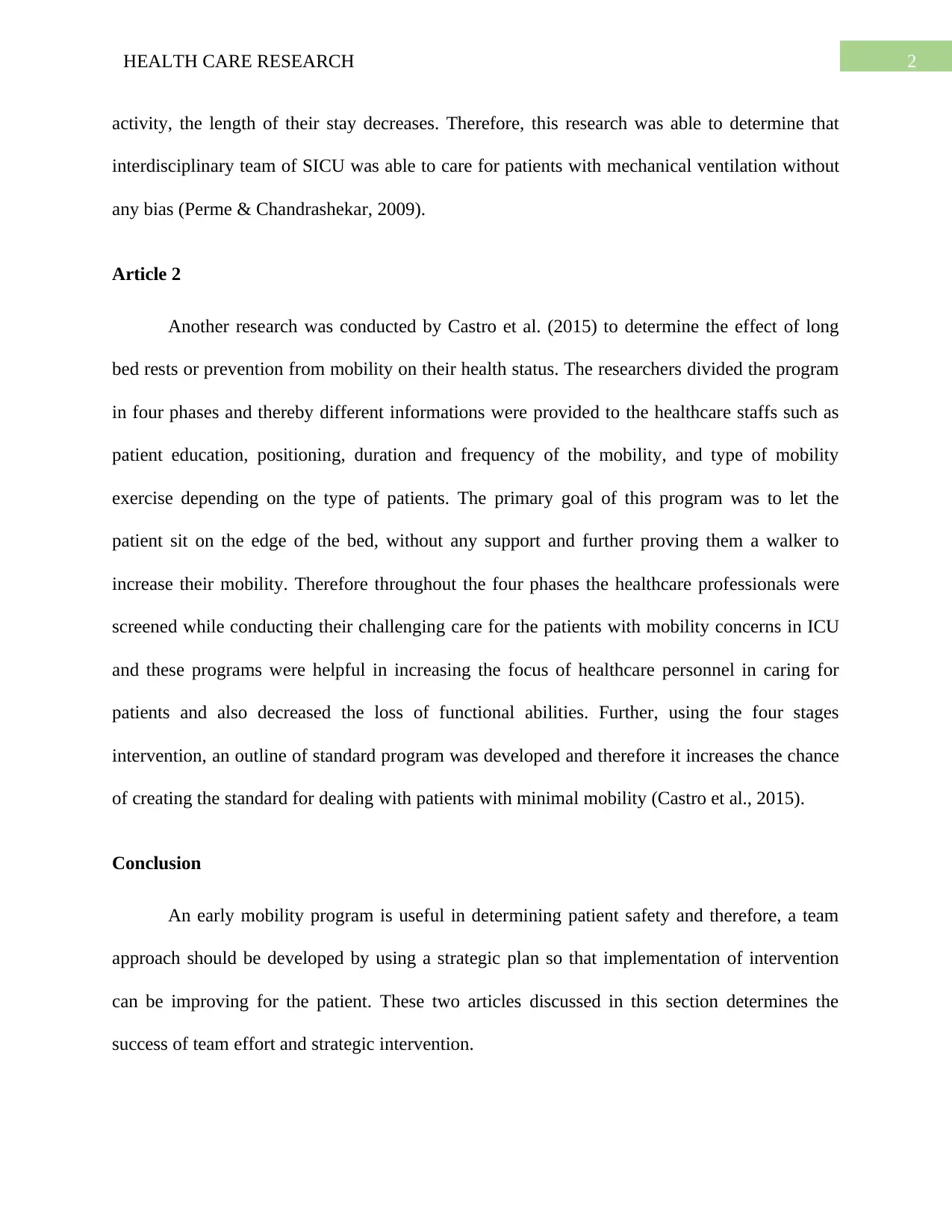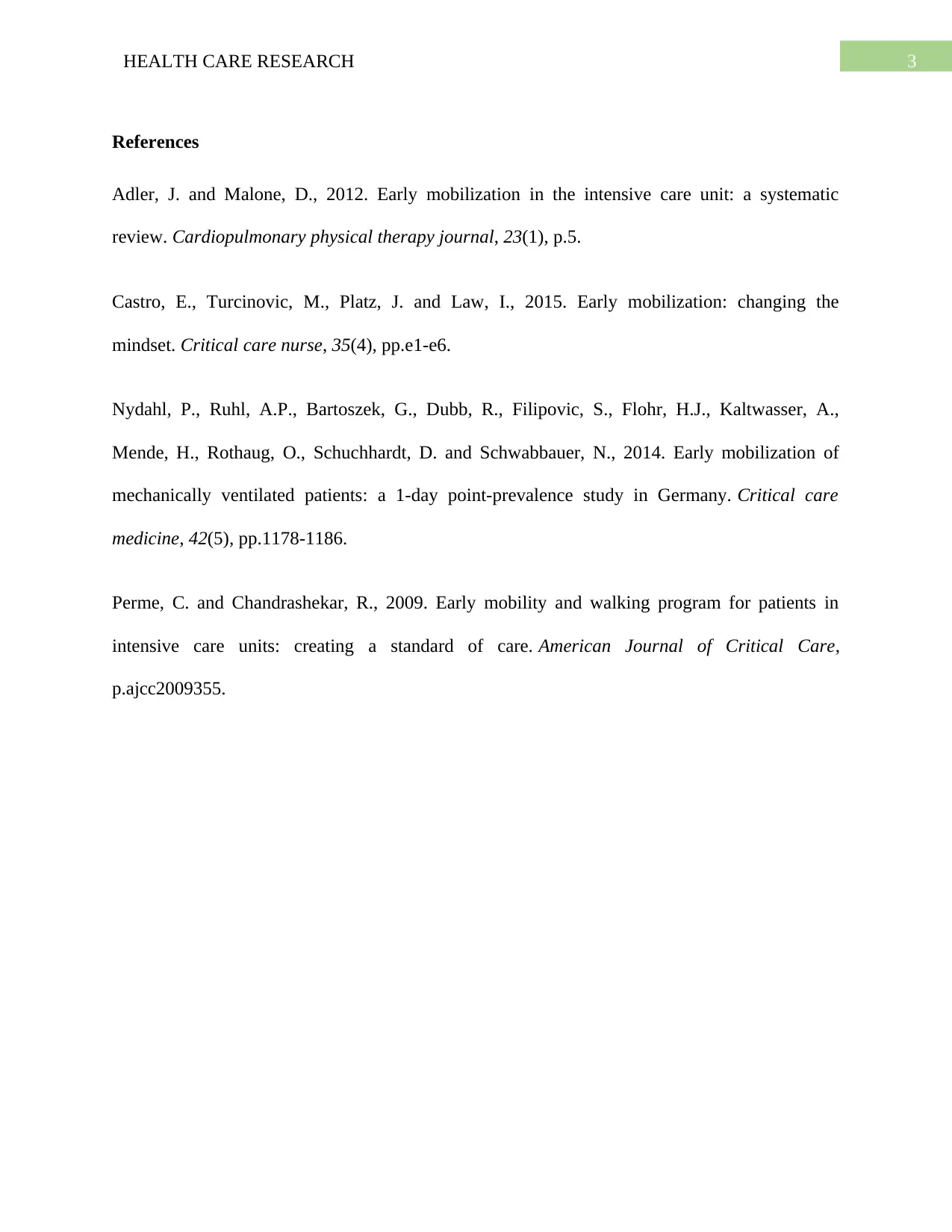Healthcare Research Analysis and Utilization: [University Name]
VerifiedAdded on 2023/06/10
|4
|818
|189
Report
AI Summary
This report provides an analysis of healthcare research focusing on patient mobility within the intensive care unit (ICU). It reviews two key research articles. The first article by Perme and Chandrashekar (2009) examines the concerns of SICU staff regarding patient mobility and the implementation of an early mobility program using the Plan-Do-Study-Act model, highlighting how interdisciplinary teams can care for mechanically ventilated patients. The second article, by Castro et al. (2015), investigates the effects of early mobilization programs, dividing the process into four phases to promote patient mobility and decrease loss of functional abilities. The report concludes that early mobility programs are essential for patient safety and advocates for a team-based approach to improve patient outcomes in the ICU setting, emphasizing the success of strategic interventions and team efforts.
1 out of 4











![[object Object]](/_next/static/media/star-bottom.7253800d.svg)